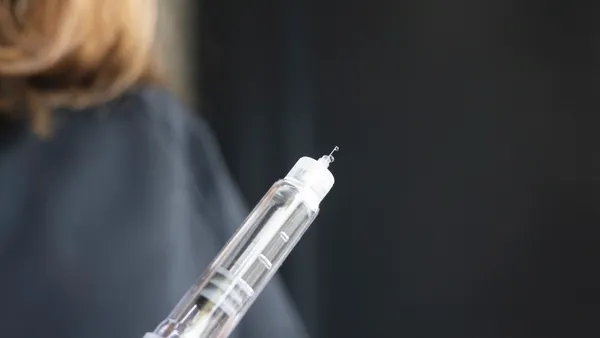If you're a pharmaceutical marketer, you're about to face a challenge no US-based marketer has seen since the early 1990s: inflation.
Inflation means your customers' money doesn't travel as far as it did a few weeks ago. Consumers have fewer dollars available to pay for things like branded drugs, even if insurance covers most of their medication cost. Still, customers are responsible for paying their copay even if they have insurance, and that money comes out of the same pocket that pays for gas, rent or a nice dinner.
The inflation problem isn't likely to improve anytime soon. Forecasts call for inflation to stick around for the next several months or longer; the last inflation period lasted 10 years when the numbers were similar to the present economic situation.¹ Pharma marketers are going to need new tools and tactics that will help meet the inflation challenge head-on, but in ways that allow MLR teams to approve content and enable agencies to execute campaigns quickly and effectively.

How did we get here and how did it happen so quickly?
If it feels like inflation came out of nowhere, it's because the U.S. has had low inflation rates for most of the past 40 years. In fact, you'd have to look back to 1991 to see an inflation rate that tops 4%. Compare that rate to the 7.5% inflation rate in January 2022 or the 7.9% inflation rate in February 2022², and you see why people suddenly feel like they have less money to spend on anything, including the brand drug you manage.

Macro events are likely to make things worse
Macro events like the ongoing conflict in Europe exacerbate the situation. Energy prices hit people hard because we depend on energy to produce, ship, and use any device, and energy prices can change dynamically when we put gas in our car every week. Because consumers feel the pain at the pump, increases in gas prices can impact the way consumers view the economy and their need to budget. Your customers look for ways to reduce spending right now, today, with medication being a top expense they're willing to cut, even if it means putting their health in jeopardy.

So, how can you help consumers—and your brand?
The good news is you're ready to meet this new challenge, because you are likely helping commercially insured and cash-paying consumers with their out-of-pocket drug costs. The bad news is that not enough consumers—or their providers—know about your offers or remember how to access them. Because many consumers associate GoodRx with savings on prescriptions, the company's website and growing presence in the provider's electronic health record (EHR) make GoodRx the perfect way to promote your messaging quickly. Since 2011, GoodRx has helped Americans attain 80 million prescriptions they otherwise would not be able to afford.
Until recently, GoodRx users have been primarily consumers. Now, healthcare professionals use GoodRx to find the best deals for their patients, even before prescribing medications. GoodRx is a proven way to reach prescribers when they're considering which treatment to prescribe. In fact, GoodRx helps prescribers get copay and other pricing information.

Inflation will hurt the situation, and rising inflation will put serious pressure on biopharma marketers in 2022. Cost saving solutions like GoodRx can help ease the pain of inflation for consumers, providers and pharma marketers. To learn more about the ways GoodRx can help you and your brand, click here.
¹ https://www.usinflationcalculator.com/inflation/historical-inflation-rates/
² https://www.usinflationcalculator.com/inflation/historical-inflation-rates/
³ GoodRx, as cited in blog post on company website: https://www.goodrx.com/healthcare-access/drug-cost-and-savings/survey-covid-19-effects-on-medication-affordability








